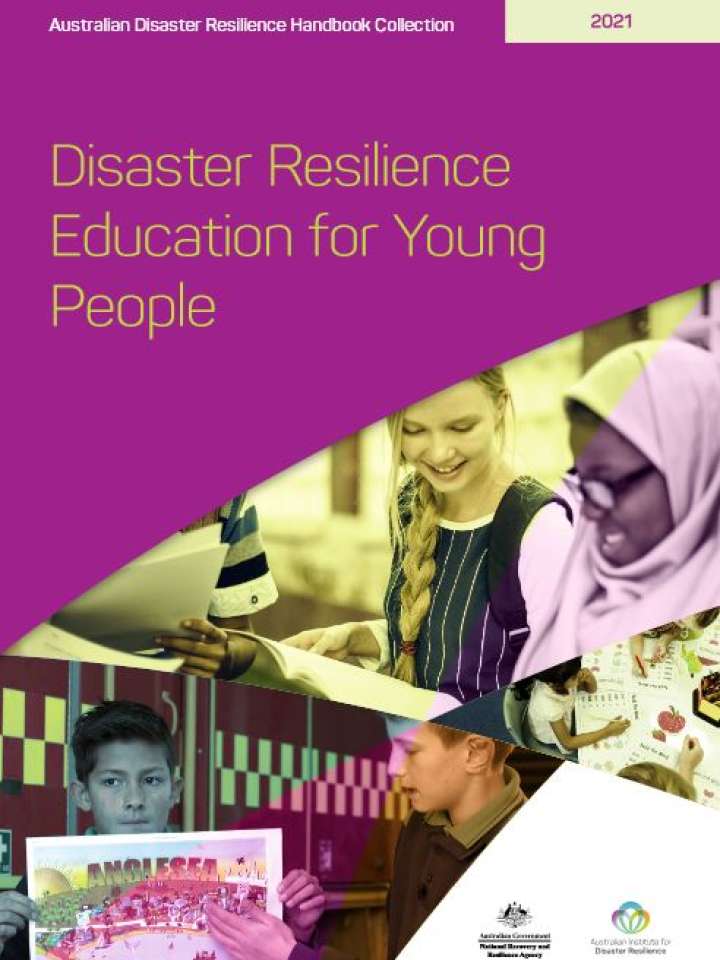Disaster resilience education for young people handbook
The guidance in this handbook provides organisations with high-level principles and strategies to design, implement and evaluate learning programs and initiatives for young people. It provides a context for youth engagement and learning communities as part of a broader community engagement and capacity-building strategy to reduce disaster risk and enhance resilience. Young people have unique capabilities to help protect themselves and their communities from the impacts of natural hazards. Providing young people with knowledge, skills and opportunities to share their learning and take action, enables them to contribute positively to the safety and resilience of people, places and the natural environment. Disaster resilience education (DRE) equips young Australians with the skills and confidence to take protective actions before, during and after an emergency or disaster.
This handbook outlines the principles, approaches and core elements of effective DRE for young people. Key principles include supporting inclusion, placing the learner at the centre, reflecting the local context and focussing on action and connection in the learning process. The handbook strongly promotes the principle of establishing and strengthening DRE partnerships such as those between schools and emergency management agencies. The main audiences for the handbook are policy makers in education settings, teachers in schools and early learning centres, and other organisations providing DRE to young people including emergency management agencies. The focus of this handbook is pre-school and school-aged children and adolescents, with the principles of learning and teaching applicable to the broader definition of young people.
Explore further

